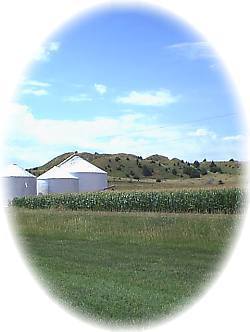Dawson County, NE
 Dawson County is located on what was the first transcontinental highway--the overland route to the west. The county was formed in 1871, just four years after the state joined the Union, March 1, 1867, and has played a major part in the development of Central Nebraska. The story of Dawson County's growth is important to you whether you live here, or in New York or California, Texas or Minnesota, because so much of our country's early history was shaped by the people who passed through here on the Oregon Trail, the Union Pacific Railroad, and later on the Lincoln Highway and U.S. Highway 30.
Dawson County is located on what was the first transcontinental highway--the overland route to the west. The county was formed in 1871, just four years after the state joined the Union, March 1, 1867, and has played a major part in the development of Central Nebraska. The story of Dawson County's growth is important to you whether you live here, or in New York or California, Texas or Minnesota, because so much of our country's early history was shaped by the people who passed through here on the Oregon Trail, the Union Pacific Railroad, and later on the Lincoln Highway and U.S. Highway 30.The Oregon Trail, the Overland Trail, and Routes of the Mormons--all passed through this valley enroute to the west, both sides of the river being used.
Aerial photographs still show the imprint of the wagon ruts in the fields south of the river. Although cultivation has erased most signs of the old Trails, the photographs still show them plainly, due to the different colors of dirt that blew into the old ruts. These will soon merge into other soil, obliterating the last visible vestiges of the old Trails, except for the very few original Pony Express Stations remaining.
The discovery of gold at Sutter's Mill, near what is now Sacramento, California, on January 24, 1848, touched off the greatest migration of history.
Paradoxically, the "Days of '49" really began in 1848. News spread slowly in those days, but travel was even slower.
But by 1849 the rush was on in earnest, and although the tide of immigrants diminished somewhat, it continued to flow up the broad Platte Valley until the completion of the transcontinental railroad, the Union Pacific, in 1868.
But even today the plains of the Platte continue to be the preferred route to -- and from -- the West. The Union Pacific is now flanked by Interstate 80 and Highway 30, while overhead fly the big airliners.
The early immigrants had the glitter of gold in their eyes, and failed to see the gold lying beneath the soil of the Platte Valley--the gold of agriculture and the water to make it pay.
Explore Dawson County
The Sun Theatre
The Sun Theatre was built and used as an opera house from 1909-1926. In 1927, the theatre was opened by Glen VanWey. Children were charged 10 cents and adults 20 cents for silent movies accompanied by an orchestra. The 1930
Gothenburg, NE Theatres"The Little Church By the Park"
In 1909, a little white frame church was built on an acre of ground donated by Ernest and Mary Love. It was called New Hope. Around the year 1920
Cozad, NE Historic ChurchesPony Express Station
The Sam Machette Station was used as an early fur trading post/ranch house along the Oregon Trail southwest of Gothenburg before it was used as a Pony Express station during its operation between April 1860 and November 1861
Gothenburg, NE Pony ExpressSwedish Crosses Cemetery
For over a century, three unique crosses have been a lasting symbol of the Swedish heritage of Gothenburg. In the early 1880s, Peter and Anna Berg, along with Anna'
Gothenburg, NE CemeteriesWillow Island Pony Express Station
The Pony Express Station which stands in the Cozad City Park was known officially as the Willow Island Station and was located just south of the present Darr Bridge. The station began in 1838
Cozad, NE Pony ExpressVeterans' War Memorial
Located on the west shore of Lake Helen, this memorial is a reminder of sacrifices made by veterans and their families of all wars. The names listed commemorate local residents who gave their lives. World War I:
Gothenburg, NE Memorials100th Meridian Museum
The 100th Meridian Museum, located adjacent to the Henri Museum, houses the antique touring coach used by William Howard Taft and his family when they toured Yellowstone Park in 1907
Cozad, NE MuseumsHistoric Depot
In the years from 1863 to 1868 the railroad had become a certainty. During the five year period, the first operations of mapping, surveying, setting telegraph poles and planning the roadbed had been completed. The railroad through this territory was completed in 1868
Gothenburg, NE Railroad HistoryHeartland Museum of Military Vehicles
A new museum with over 60 completely restored and operational military vehicles spanning from WWII to the present. See Bradley Fighting Vehicles, a rare Snow Tractor, Bomb Loader, Tractor Dozer, M-60 Tanks, half-tracks, jeeps, "weasels"
Lexington, NE MuseumsErnest A. Calling House
Ernest A. Calling, a pioneer businessman of Gothenburg, hired L.J. Anderson to build this distinctive Queen Anne style home in 1907. Born in Klipp, Sweden, in 1870, Calling emigrated to the United States in 1889
Gothenburg, NE National RegisterLake Helen
Foresighted citizens approved a bond issue in 1889 for construction of a 12
Gothenburg, NE Recreation